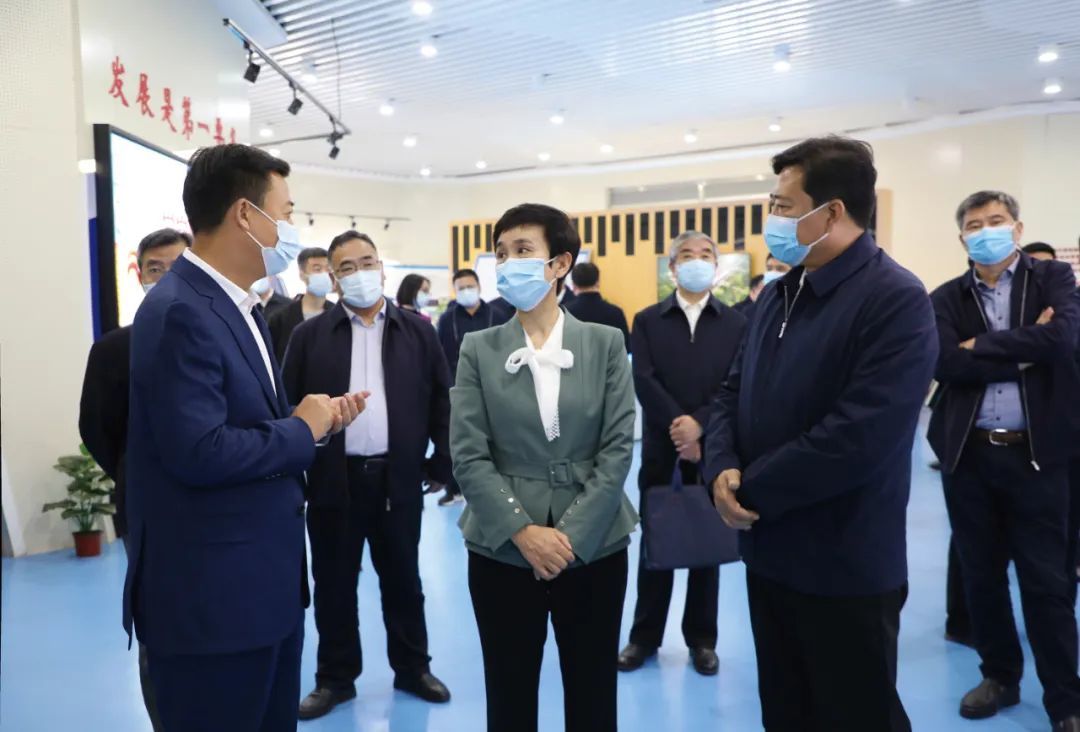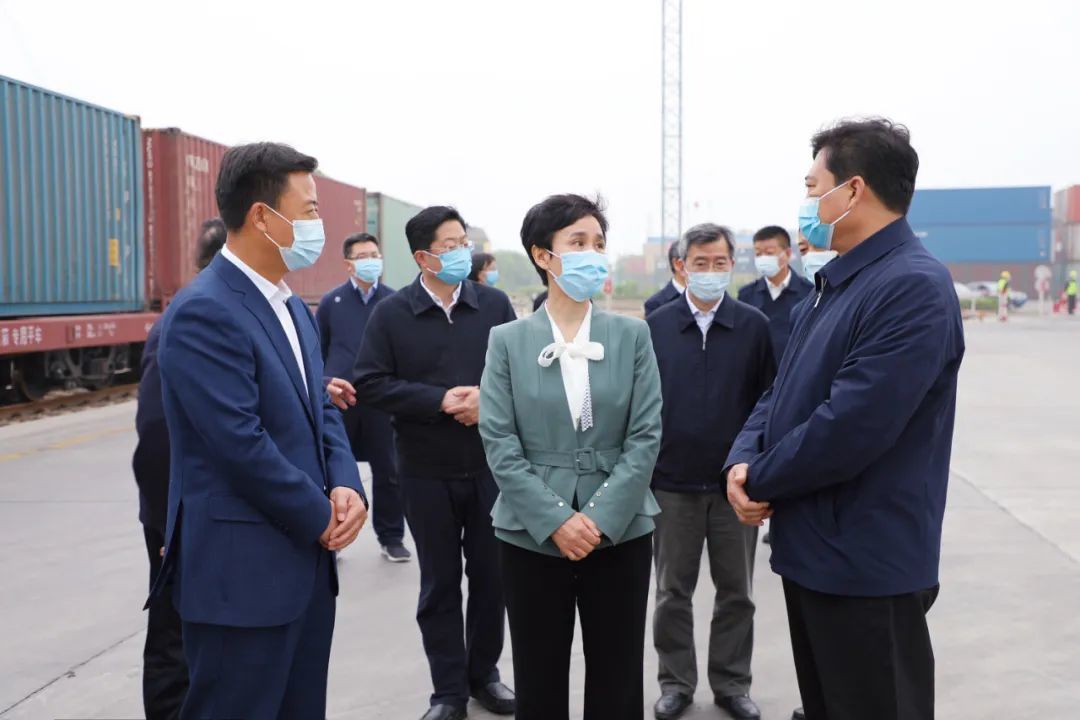Gao Yunxiao, vice governor of Hebei Province, visited Shijiazhuang international dry port for investigation
On May 11, Gao Yunxiao, vice governor of Hebei Province, went to Shijiazhuang to investigate the construction and development of the international dry port. She stressed the need to thoroughly implement the decisions and arrangements of the CPC Central Committee, the State Council, the provincial Party committee and the provincial government, improve the political position, continue to upgrade and strengthen, accelerate the construction and development of Shijiazhuang international dry port, and better serve the coordinated development of Beijing, Tianjin and Hebei and the high-level opening to the outside world.

Hao Jiecheng, Deputy Secretary General of the provincial government, Qiao Xiaolin, second level inspector of the provincial development and Reform Commission, Wei Xiaojie, second level inspector of the provincial SASAC, Dai Weimin, deputy director of the Provincial Department of transportation, Wang Weibing, deputy director of Shijiazhuang customs, Zhang Jifang, deputy director of the Provincial Department of Commerce, Zhan Peng, vice mayor of Shijiazhuang, and Wei Zhanlu, Deputy Secretary General of the Shijiazhuang municipal government. Wan Shujun, Secretary of Gaoyi County Party committee, and Liu Ruiling, chairman of Hebei Lugang group, accompanied the investigation.
Gao Yunxiao and his party came to Shijiazhuang international dry port and went into the project exhibition hall to learn more about the development history, current layout and future planning of the dry port. Then they walked to the railway container operation station to observe the functional facilities construction of the station, the operation of China Europe trains, the international supply organization, the agglomeration of port industries, etc.

During the investigation, Gao Yunxiao listened carefully to Wan Shujun and Liu Ruiling on the progress of Shijiazhuang international dry port in building an international dry port cluster in terms of "smooth channel, strong port, building hub, organizing network, promoting trade and gathering industries", and learned in detail a series of policies and measures of the Provincial Development and Reform Commission, the provincial SASAC, the Provincial Department of transportation, the Provincial Department of Commerce and Shijiazhuang customs to support the accelerated development of the international dry port, And work with the responsible comrades of relevant units in provinces, cities and counties to study and solve the difficulties and problems encountered in the development of enterprises.
Gao Yunxiao pointed out that Shijiazhuang international dry port is a national first-class railway logistics hub base and a dry port type national logistics hub. It is an important carrier for our province to build an important national modern commercial logistics base. We should stand on the overall development situation of the whole province, strengthen the idea of a game of chess, adhere to the coordinated efforts of provinces, cities and counties, and achieve new results in promoting the construction and development of international dry ports.
Gao Yunxiao requires that we should closely follow the functional orientation of "three zones and one base", further clarify the development orientation, development objectives and development path of dry ports, and promote the planning and construction of dry ports with high standards with strategic vision, international vision and forward-looking thinking. We should give full play to the regional advantages of dry ports, strive to build a modern logistics development platform with reasonable layout, multiple functions, industrial agglomeration and powerful services, better integrate services into the construction of the "the Belt and Road" and expand opening to the outside world. We should actively strive for national support, increase precision assistance, solidly promote the implementation and effectiveness of various support policies, and promote the high-quality development of international dry ports.
上一页





